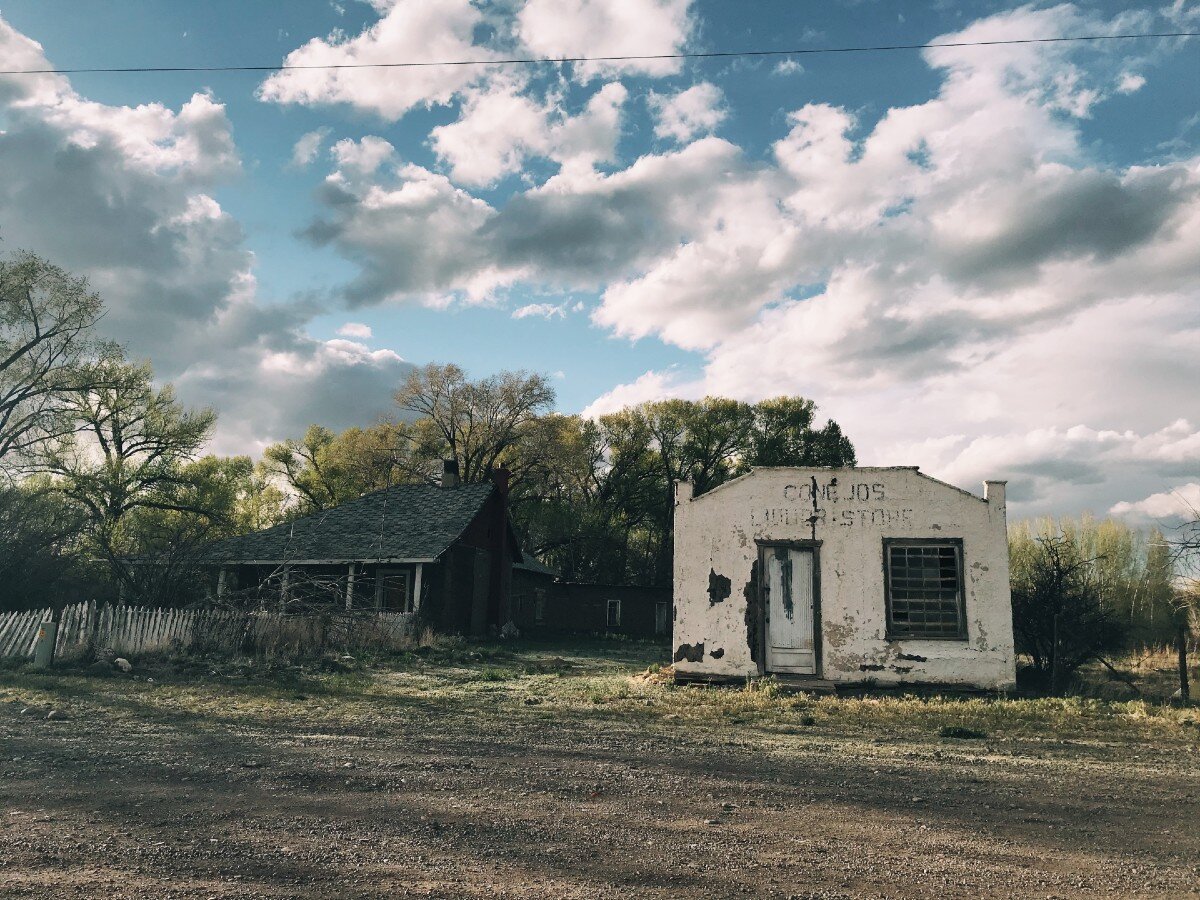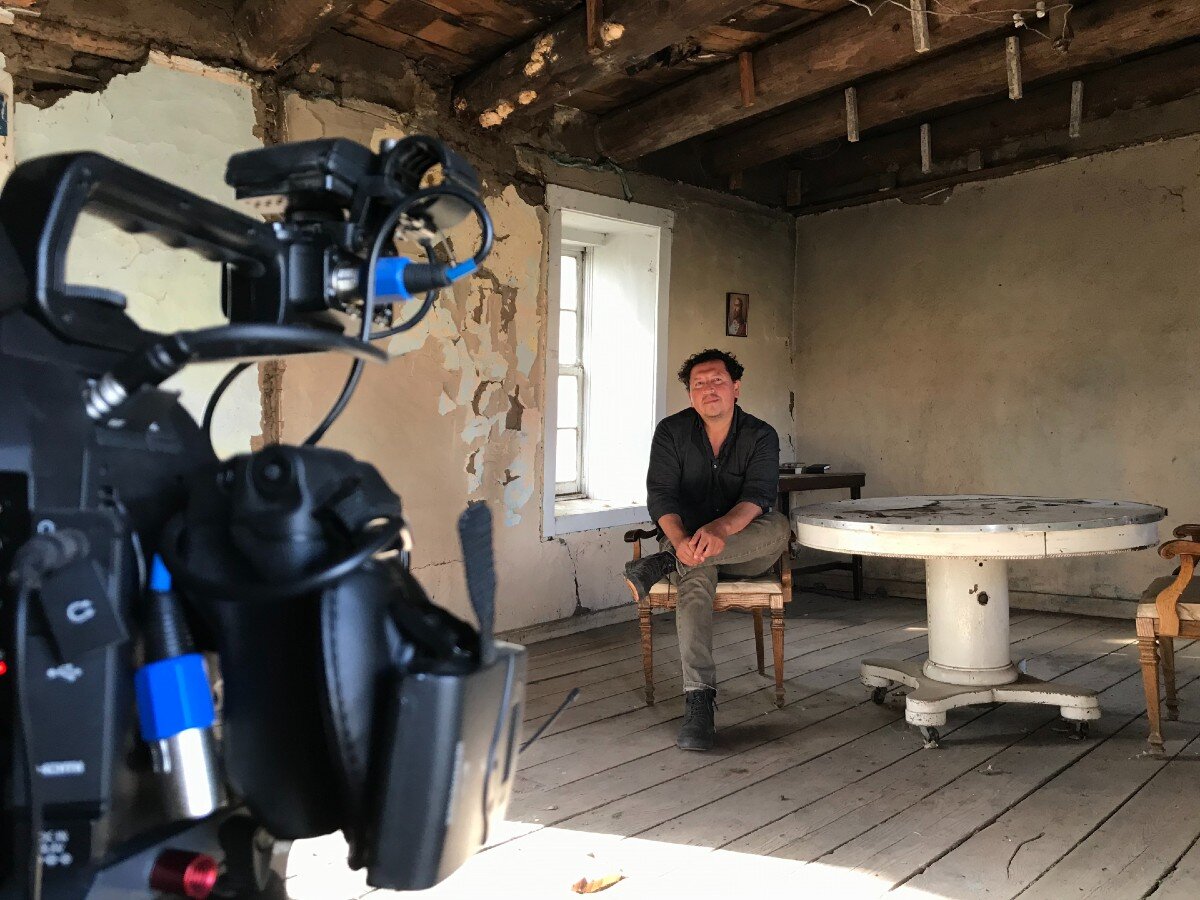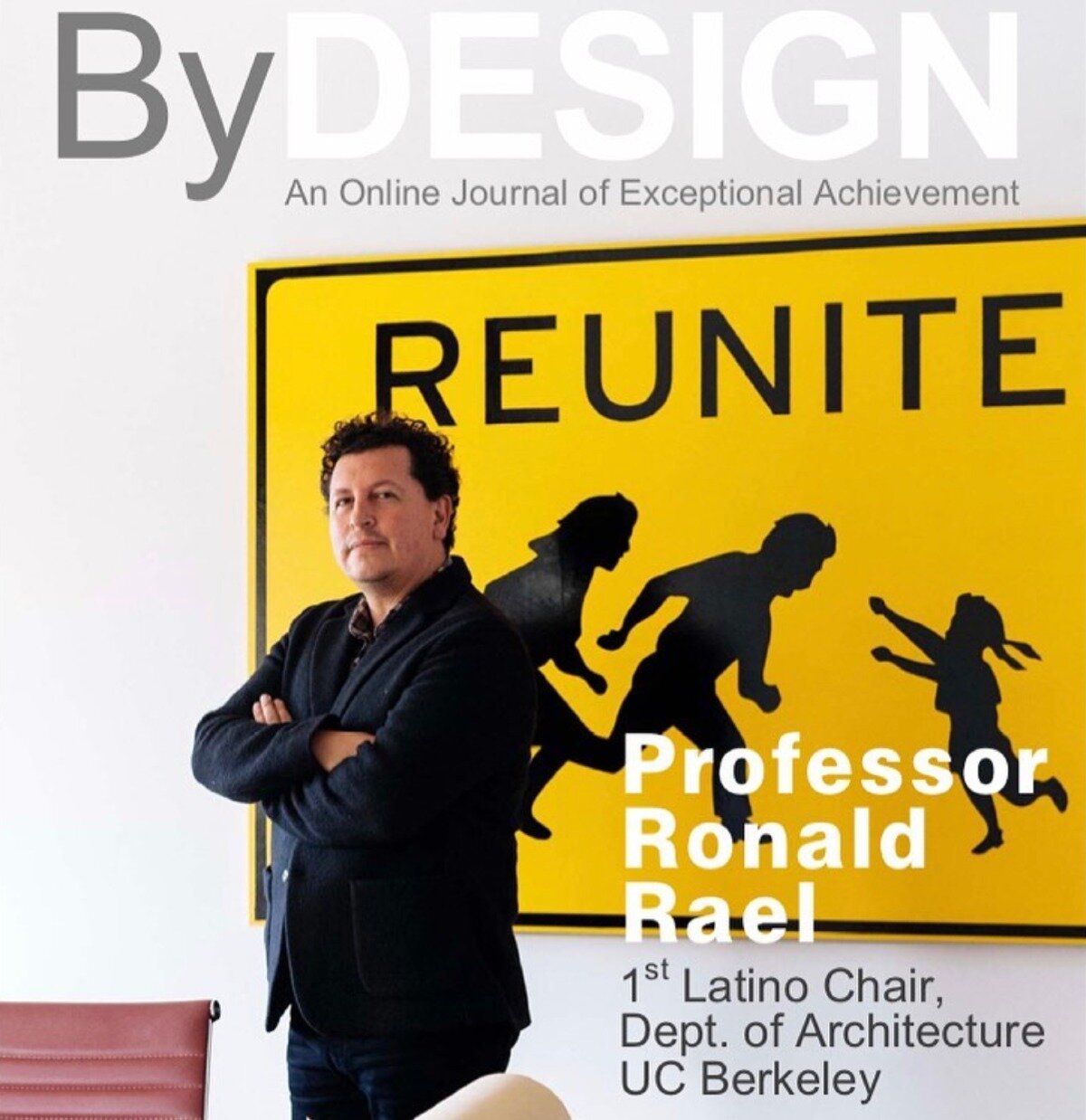In a small village in southern Colorado, architect Ronald Rael makes an earthy return

CONEJOS COUNTY, Colo. — Architect, artist, and professor Ronald Rael returned home to his small Conejos County village mid-pandemic — and was welcomed with a characteristic and unparalleled connection of self, land and place.
Rael, director of the Masters of Architecture program at the University of California, Berkeley, left Oakland in May 2020 as the pandemic created sweeping resource crunches and a lack of mobility in the urban sphere.
His family’s place of habitation for seven generations — the land where he was raised — called out to him.
“Even when I’m in Oakland, I can feel this landscape, and it’s pulling me,” said Rael, motioning toward the San Juan mountains of the Southern Rocky region. “It’s been great to come back.”
“It is a project about making connections,” said Rael. “It has a lot of metaphors in it about labor balances and trade balances, and larger political ramifications. But it is also about the generosity that two people have between each other in a shared act of joy. We have this kind of balance and relationship and equanimity that exists between us. And a wall can’t prevent those connections from happening.”
Changing this narrative inspires Rael, who points out that people have come together to celebrate binational heritage in spite of the border since there has been one. The border itself is its own territory — “a hybrid culture with its fusion of culture, music, food, and belief systems,” said Rael.
As historic as positive connections of binational heritage are the dire border conditions. Militarization and family separation have always been part of this story.
“If we look back at this [southern Colorado] landscape back then, children were being taken from their families as well,” he said. “I think there are lessons to be learned about what happened, and how we might not repeat them today.”
Rael's commitment to acknowledging, addressing, and healing is further practiced through his undertaking the restoration of a number of local historic adobe buildings in surrounding villages.

“Maybe I’m not confident about any assertion about who I am, but I’m pretty comfortable about knowing where I came from,” Rael said.
“There’s a gradient of culture that exists,” he said. “A lot of people who think about this question think about it all their lives. They try to figure out — Who are we, or who am I, in a place where I’ve been forever?”
Kate Perdoni is a multimedia journalist for Rocky Mountain PBS and can be reached at kateperdoni@rmpbs.org.
Related Stories
Rael brought graduate students and 3D printing implements to this remote area, “and we spent the summer making things,” he said. “We created 3D-printed houses. We were really free. Honestly, I think of this year as one of the best years of my life.”
Pre-pandemic, Rael could walk to campus to teach. Working at Berkeley and living in the Bay area is “amazing,” he said. “But every time I walked from my home to campus, I thought a lot about how I am not connected to that landscape. It’s much different from here.”

At home in La Florida — an unincorporated village that doesn’t appear on most Colorado maps — at 8,000 feet, Rael’s elevated connection to the land is foremost and personal.
“By memory, I could probably draw the outline of the mountains that surround me. I know all the rivers and creeks. I know the people who live here. I have agency in the landscape; I can manage the way that the waters flow from the snow melt into the fields,” he detailed.
“And that makes me connected to the birds that land, and the fish that come into those places, and the grass that grows, and the animals that eat that grass. And that’s just a very different reality.”
Rael continued: “I’ve had a hard time accepting a reality in which I’m not connected to the land.”
He has taught remotely from Colorado for one year. A friend recalls recently driving up to visit Rael at home and finding him with his laptop perched on a block of wood, teaching class from a field.
Here, too, Rael irrigates using a hand-dug system of waterways, called acequias, created by the village’s first settlers. Like many surrounding communities, La Florida was established under a Mexican territorial land grant program resulting in the first permanent settlements of what later became Colorado. Rael lives in a fourth-generation adobe home, made of bricks of straw and the very land on which it sits.

This rootedness is a driving force of Rael’s work in earth architecture and borderland installation, two themes within a large body that includes temporary and permanent multimedia installations, signage, sketches, models, 3D prints and designs, structures and outbuildings, even snow globes.
In a quest to further explore contemporary uses for traditional building materials, as is one of Rael’s stated missions, he and students completed standalone 3D structures in the fields of his ranch, printed mechanically with earthen adobe mud, called Casa Covida.
Adobe, in many ways, are the building blocks of Rael’s legacy.
Rael said he grew up “fairly traditionally. People built adobe houses, people ate certain foods. The majority of people spoke Spanish as a first language, and many people didn’t speak English — like my grandparents, and my great grandparents.”
When Mexican territory shifted to the United States by the late 1840s, residents had a choice to stay and become U.S. citizens or move within Mexico’s newly established borders.
Rael’s ancestors are some of those who stayed. The notion of their citizenry remains a dynamic aspect of how regional identity is shaped.
“The border isn’t here — but it was here,” Rael says, “and that memory still exists.”
This layered history is entwined in Rael’s genetic and cellular structures, as well as his artistic practice. His art includes acknowledgement of the land’s deep indigenous ties, and his people’s own indigenous heritage.
“We are not only people who identify as Mexicanos, but in that word, it’s so charged with lots of different meanings of our mestizaje, our mixed indigenous heritage, our Spanish colonial heritage, and the conflicts that I think exist within all of us related to those two lineages coming together,” said Rael. “And in a landscape that has also been re-colonized by the United States.”

“People like us are not Native American enough. And we’re not American enough. And we’re not Mexican enough,” Rael said. “And so we walk this strange line of trying to decipher our identities. And we express them in different ways.”
One of these expressions, Teeter-Totter Wall, received an international acknowledgment as the 2020 Beazley Design of the Year.
In July 2019, Rael and his architectural studio Rael San Fratello partnered with Juárez-based art collective Colectivo Chopeke to create Teeter-Totter Wall, a series of three bright pink teeter-totters placed briefly across the steel slats of the U.S.-Mexico border.
The team drew attention to shared humanity amidst divisive politics on the border in what Rael called “a clandestine act of both play and resistance.” The guerrilla project, Rael said, allowed children and adults on both sides to share joy. The event between Juárez and El Paso, Texas was an overnight media sensation, instilling a ripple of solidarity and hope across physical and digital landscapes.